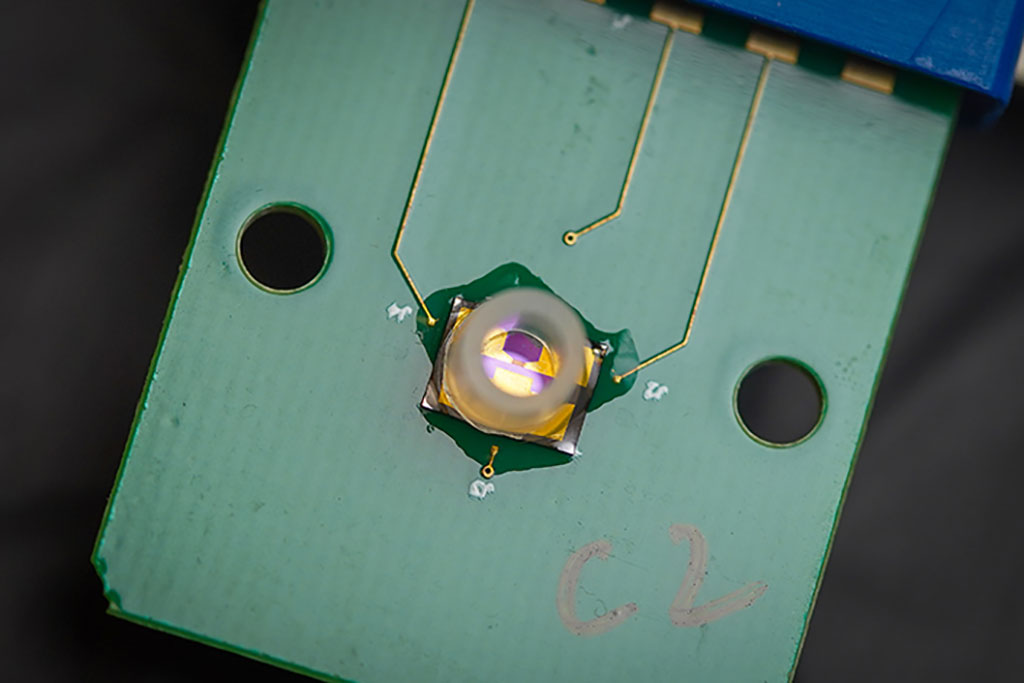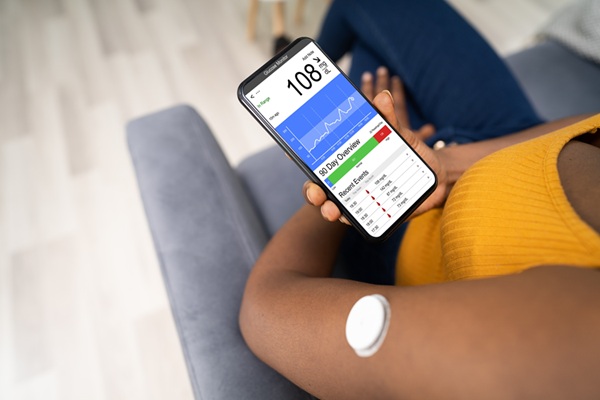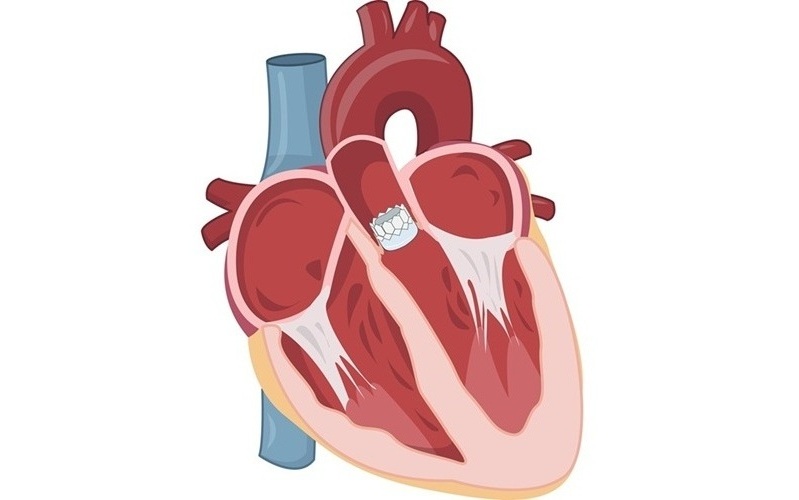Wireless, Handheld, Non-Invasive Device Detects Alzheimer's and Parkinson's Biomarkers
|
By HospiMedica International staff writers Posted on 21 Nov 2023 |

The prevalence of neurodegenerative diseases like Alzheimer’s and Parkinson’s is increasing. Current diagnostic methods for these conditions typically involve invasive procedures such as spinal taps and MRI scans, which can be daunting for patients and pose challenges for those with mobility issues or limited access to medical facilities. In response to these challenges, researchers have developed a groundbreaking handheld device that non-invasively detects biomarkers associated with Alzheimer’s and Parkinson’s Diseases. Additionally, this device has the capability to wirelessly transmit its findings to a computer or smartphone.
Developed by an international team of researchers led by UC San Diego (La Jolla, CA, USA), the device utilizes an electrical detection system rather than a chemical one. This approach is both simpler and more accurate. The core component of the device is a highly sensitive transistor, known as a field effect transistor (FET), featuring a graphene layer that is just one atom thick. This graphene FET (GFET) incorporates three electrodes: the source and drain electrodes connected to a battery’s positive and negative poles to facilitate current flow, and a gate electrode that regulates this current. A unique DNA strand, acting as a probe, is attached to the gate electrode. This probe specifically binds to amyloid beta, tau, or synuclein proteins. The interaction between these amyloids and their corresponding DNA probe alters the current between the source and drain electrodes, and it is this change in current or voltage that signals the presence of specific biomarkers.
The device’s effectiveness was validated using brain-derived amyloid proteins from deceased Alzheimer’s and Parkinson’s patients. The biosensors accurately detected the disease-specific biomarkers, matching the precision of current advanced diagnostic methods. Remarkably, the device requires only minimal sample quantities and can accurately perform even in samples containing a variety of proteins. While detecting tau proteins presented more challenges, the device’s ability to analyze multiple biomarkers allows for a comprehensive and reliable diagnosis. Future plans include testing the device with blood plasma, cerebrospinal fluid, and eventually saliva and urine samples in hospitals and nursing homes. Following successful trials, the researchers aim to seek FDA approval within the next few months, with the ultimate goal of commercializing the device within a year.
“This portable diagnostic system would allow testing at-home and at point of care, like clinics and nursing homes, for neurodegenerative diseases globally,” said Ratnesh Lal, a bioengineering, mechanical engineering and materials science professor at the UC San Diego Jacobs School of Engineering.
Related Links:
UC San Diego
Latest Point of Care News
Channels
Critical Care
view channel
AI-Enhanced Wearables Could Transform Type 2 Diabetes and Prediabetes Care
Artificial intelligence (AI)–powered wearable devices, particularly continuous glucose monitors, are rapidly changing how people with prediabetes and Type 2 diabetes understand and manage their blood sugar.... Read more
Breathable Electronic Skin Paves Way for Next-Generation Wearable Devices
Electronic skin devices are designed to adhere closely to the human body to monitor health and biosignals, but long-term use often leads to skin irritation caused by trapped sweat and poor breathability.... Read moreSurgical Techniques
view channel
3D-Printed Blood Vessel Scaffolds Could Transform Heart Bypass Surgeries
A tiny, opaque tube held up in a lab may look unremarkable at first glance, but its microscopic surface features could mark a meaningful step forward in heart bypass surgery. Measuring just about one centimeter... Read more
Novel Imaging Technique Helps View Blood Perfusion During Esophageal Surgery
Esophagectomy is a complex and high-risk surgery often required for esophageal cancer, with anastomotic leakage remaining one of its most serious complications. This defect at the surgical suture line... Read more
Minimally Invasive Surgery Proven Safe and Effective for Complex ‘Whipple’ Procedure
Tumors of the pancreatic head often require a highly complex operation known as pancreatoduodenectomy or the Whipple procedure. This surgery involves removing multiple structures and creating several internal... Read more
Catheter-Based Procedures Offer Less Invasive Option for Treatment of Valvular Disease
Valvular heart disease, caused by tight or leaky valves between heart chambers, affects up to 10% of older adults and leads to more than 120,000 deaths globally each year. Traditional open-heart surgery... Read morePatient Care
view channel
Revolutionary Automatic IV-Line Flushing Device to Enhance Infusion Care
More than 80% of in-hospital patients receive intravenous (IV) therapy. Every dose of IV medicine delivered in a small volume (<250 mL) infusion bag should be followed by subsequent flushing to ensure... Read more
VR Training Tool Combats Contamination of Portable Medical Equipment
Healthcare-associated infections (HAIs) impact one in every 31 patients, cause nearly 100,000 deaths each year, and cost USD 28.4 billion in direct medical expenses. Notably, up to 75% of these infections... Read more
Portable Biosensor Platform to Reduce Hospital-Acquired Infections
Approximately 4 million patients in the European Union acquire healthcare-associated infections (HAIs) or nosocomial infections each year, with around 37,000 deaths directly resulting from these infections,... Read moreFirst-Of-Its-Kind Portable Germicidal Light Technology Disinfects High-Touch Clinical Surfaces in Seconds
Reducing healthcare-acquired infections (HAIs) remains a pressing issue within global healthcare systems. In the United States alone, 1.7 million patients contract HAIs annually, leading to approximately... Read moreHealth IT
view channel
EMR-Based Tool Predicts Graft Failure After Kidney Transplant
Kidney transplantation offers patients with end-stage kidney disease longer survival and better quality of life than dialysis, yet graft failure remains a major challenge. Although a successful transplant... Read more
Printable Molecule-Selective Nanoparticles Enable Mass Production of Wearable Biosensors
The future of medicine is likely to focus on the personalization of healthcare—understanding exactly what an individual requires and delivering the appropriate combination of nutrients, metabolites, and... Read moreBusiness
view channel
Philips and Masimo Partner to Advance Patient Monitoring Measurement Technologies
Royal Philips (Amsterdam, Netherlands) and Masimo (Irvine, California, USA) have renewed their multi-year strategic collaboration, combining Philips’ expertise in patient monitoring with Masimo’s noninvasive... Read more
B. Braun Acquires Digital Microsurgery Company True Digital Surgery
The high-end microsurgery market in neurosurgery, spine, and ENT is undergoing a significant transformation. Traditional analog microscopes are giving way to digital exoscopes, which provide improved visualization,... Read more
CMEF 2025 to Promote Holistic and High-Quality Development of Medical and Health Industry
The 92nd China International Medical Equipment Fair (CMEF 2025) Autumn Exhibition is scheduled to be held from September 26 to 29 at the China Import and Export Fair Complex (Canton Fair Complex) in Guangzhou.... Read more















